Best
Budget Digital Piano
-
Overall: 88-Key Digital Piano Ideal For Living Spaces
-
Best Feature: Synthetic Ebony And Ivory Keys Provide That Premium Grand Feel
-
TedScore™: 8.5/10
Best
Overall Grand
Piano
Grand Piano INCREDIBLE SOUND AND LONGEVITY
-
Overall: Utilizes 3 Pedals For Full Sostenuto
-
Best Feature: Made From High-Quality Materials
-
TedScore™: 9/10
Best
Digital Upright Piano
Digital Piano UNMISTAKABLE QUALITY AND STYLE
-
Overall: OLED Display That Makes Navigation Easy
-
Best Feature: Spatial Headphone Sound Technology Enhances The Depth And Realism Of The Sound
-
TedScore™: 8.5/10

Playing a 6/8 time signature on the piano felt like stumbling upon a hidden chest full of musical wonders. The rhythm seemed lively, almost like a dance, with each note jumping and twirling. It was as thrilling as riding a roller coaster full of twists and turns, where every bar of music took me on a different adventure. Imagine a world where notes are like little stepping stones, leading you to places unknown, sparking curiosity hidden in every chord. And for anyone curious about adding flair to their piano skills, this rhythm might just be the secret ingredient waiting to unlock new levels of musical magic.
It’s different from the march-like 2/4 or the waltz-like 3/4, with a graceful and lively sway.
Picture yourself dancing to a flowing melody that can’t stay still—that’s the fun of 6/8 time. It’s like music saying, ‘Let’s dance, feel the beat!’
So, let me take you through this delightful world of compound time with a playful and helpful guide. You might find yourself lost in the enchanting rhythm of 6/8.
Exploring 6/8 Time Signature
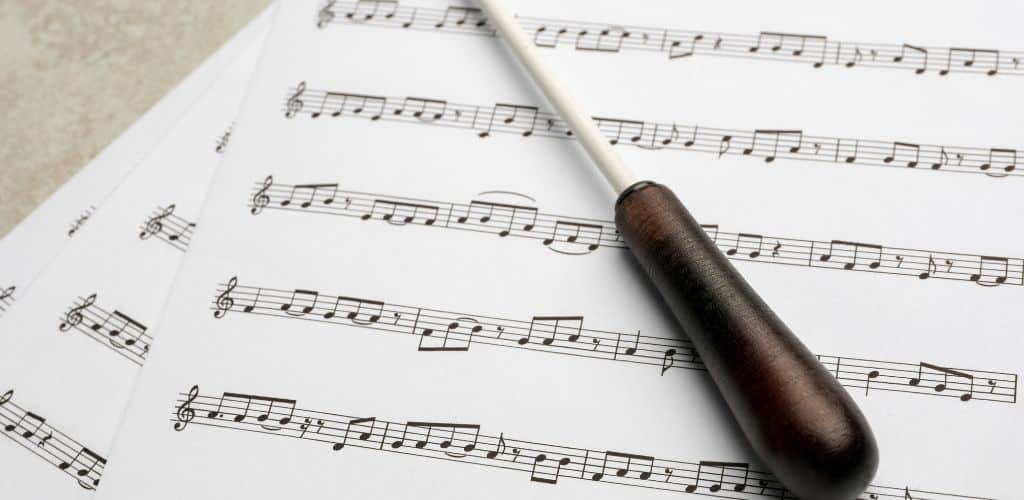
Explore the rhythmic patterns of 6/8 and feel its unique groove, where the music seems to dance as you keep count. It’s like finding a hidden room where the beats are having their own little party!
Characteristics of 6/8 Meter
The 6/8 time signature is like having six eighth notes playfully skipping in each measure. It belongs to the compound meter family, which means the beats are grouped into larger units.
Each main beat is a dotted quarter note that gives birth to three little eighth notes, creating a pattern that feels like two main pulses, one stronger than the next.
You can feel this emphasis when tapping along, as the rhythm naturally splits into two groups of three.
Counting in 6/8 Time
Counting in 6/8 is like leading a dance where every third step is more pronounced. I hum, using “one-two-three, four-five-six” to keep the beat.
Each “one” and “four” marks the start of a new group, counting as the stronger beats where the dancers might spin a bit more. This helps musicians and listeners find the rhythm’s natural flow—like the song’s heartbeat.

Common Usage in Genres
I’ve noticed that the 6/8 time signature has made itself quite at home in various music styles. In folk tunes, it’s almost as if the signature tells a story with every beat, taking you on a journey through an enchanted forest.
It’s not uncommon for me to find this signature in jazz pieces, too, where it brings a particular swing that gets your foot tapping.
Even the rock music has dabbled with 6/8, adding a bit of an unexpected twist to the typical four-on-the-floor pulse.
Note Values and Grouping

The 6/8 time signature can be tricky sometimes, but have no fear! We’ll crack the code together by breaking down note values and groupings piece by piece.
Note Groupings in 6/8
6/8, we’re dealing with compound time, like a waltz’s more complex cousin. Each bar is divided into two main beats, not the six you might expect from the name.
These main beats are chunky, consisting of three eighth notes, forming a triplet feel that gives the music a bouncing rhythm. You’ll often find that these triplets are beamed together, which is a visual cue to help us identify the grouping.
Comparing Note Values
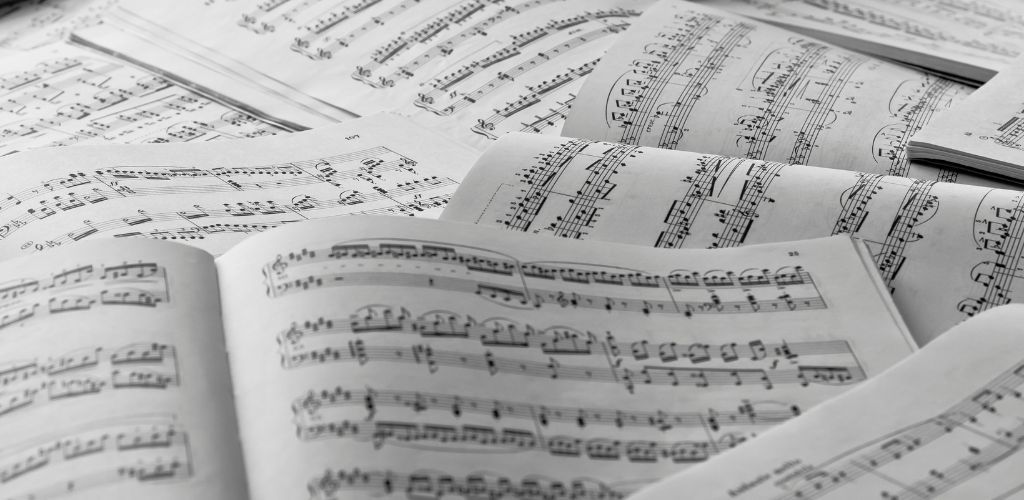
Let’s talk about size for a second – note sizes.
In the jolly land of 6/8, an eighth note is the standard unit, like our trusty one-pence coin. A quarter note, though, becomes a bit of an odd duck, stretching to cover two eighth notes.
The show’s real star is the dotted quarter note, which equals three eighth notes. Imagine it as a 50-pence piece worth three 1-pence coins – it’s larger in value and keeps the beat delightfully steady.
Keep an eye on those bar lines; they’re like our musical full stops, ending a sentence before we jump into the next. For clarity, notes within the same beat are often grouped with a beam, like friends in a group photo, making it easy to see which notes are collectively taking a bow on each beat.
Understanding Time Signatures
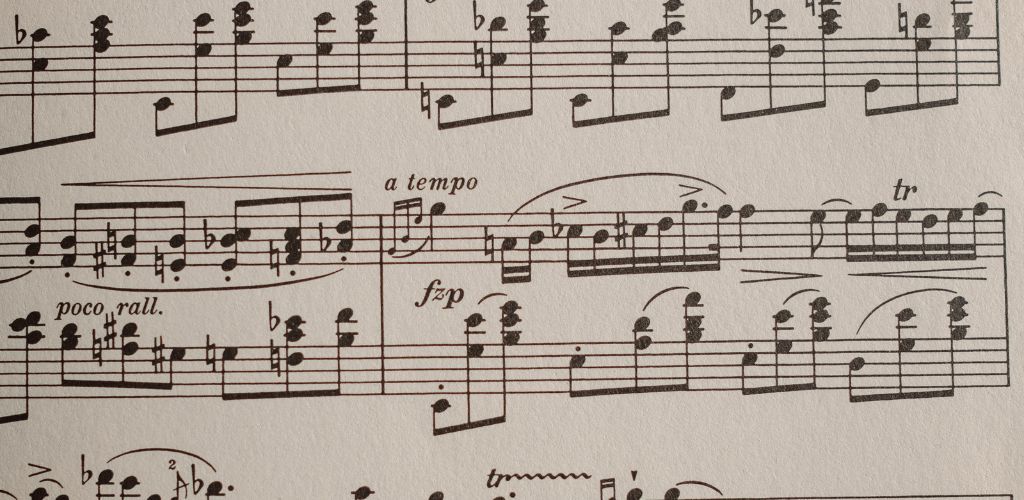
Let’s explore the world of time signatures together! I’ll show you how beats and measures work and how they shape the rhythm of music.
Basic Concepts of Time Signatures
In my exploration of rhythms, I’ve learned that a time signature is like a code, with two numbers stacked on each other, showing us how to count the music.
The top number tells us how many beats are in each measure, and the bottom number shows the type of note that gets one beat.
Understanding this relationship between beats and note types is essential for understanding time signatures. For example, in a 4/4 time signature, each measure has four beats, and each quarter note gets one beat.
Difference Between Simple and Compound Time
Let’s differentiate between simple and compound time signatures. Simple time signatures have a top number of 2, 3, or 4, and these can be divided into two beats.
Conversely, compound time signatures, like our friend 6/8, feature a top number of 6, 9, or 12. These beats get daring, dividing into three equal parts, giving the music a lovely, lilting feel. Imagine each beat as a triplet, allowing the music to dance more fluidly.

Performance Practice
In the enchanting world of the 6/8 time signature, my focus is on giving you the inside scoop on making your performances captivating. I’ll walk you through using a metronome and break down those delightfully tricky rhythms step by step.
Metronome Use for 6/8 Time
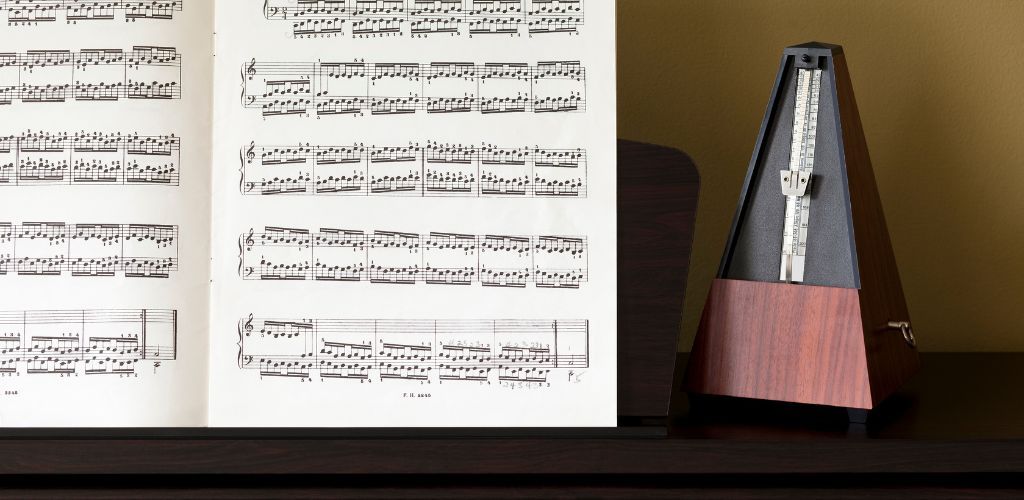
When I practice pieces in 6/8, my metronome is like a dancing partner guiding me in a graceful waltz. I set it to tick for each group of three quavers, helping me feel the two main beats per bar.
Starting slow and gradually increasing the speed helps me get the tempo right. This way, I stay steady and avoid rushing or dragging the rhythm in my performances.
Approaching Complex Rhythms
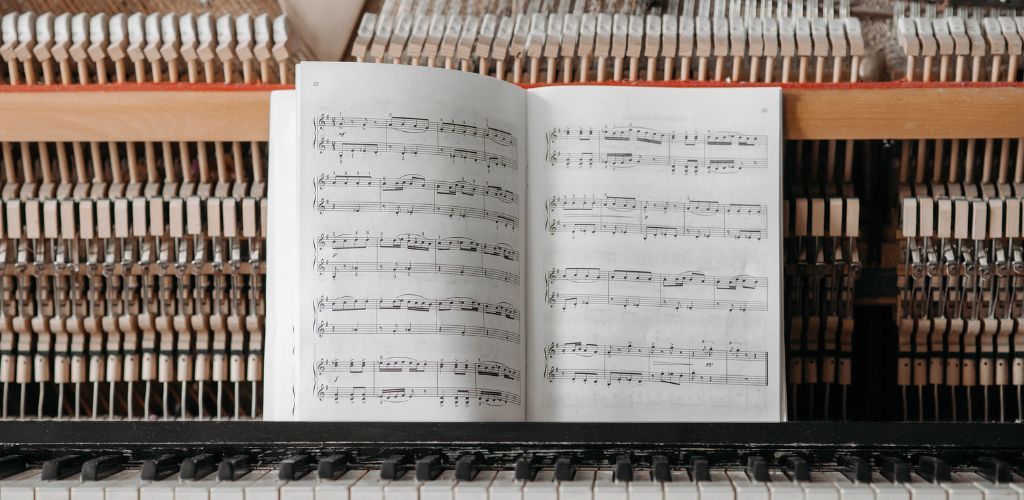
Complex rhythms in 6/8 can feel like a tricky puzzle I’m itching to solve. I’ll typically count out loud, “1-2-3, 4-5-6,” emphasizing the “1” and “4” to nail the primary pulse.
Breaking complicated patterns into smaller, bite-sized chunks makes them easier to digest. Then, it’s a matter of piecing them back together until they flow as smoothly as honey and my confidence soars!
Expanding Musical Knowledge
In the vast landscape of musical rhythm, 6/8 is merely one coordinate. So, let’s dive into the richness of time signatures, and I’ll show you how to master reading them in sheet music.
Beyond 6/8: Other Time Signatures
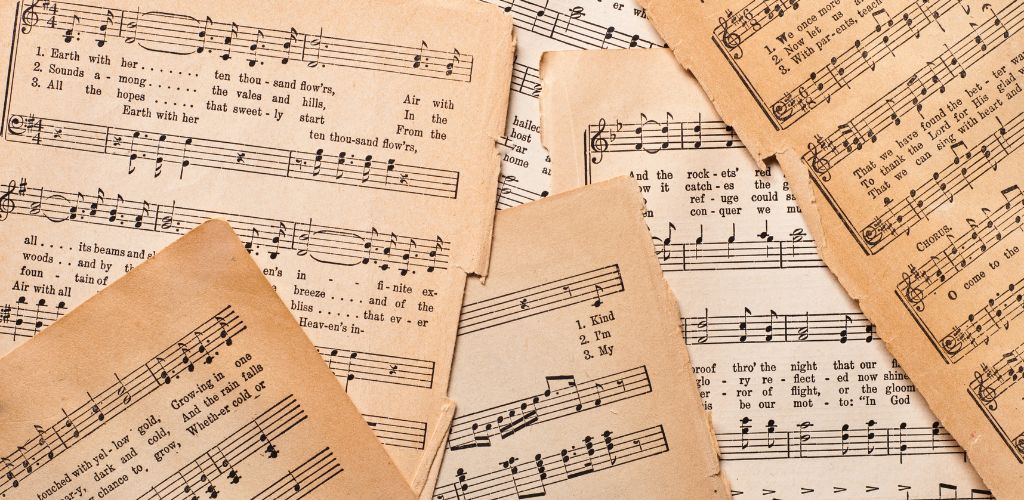
Dabbling in music theory, I’ve encountered a variety of time signatures, both regular and irregular. These are like unique beats that give the music its pulse and style.
Simple meter time signatures, such as 2/4, 3/4, and 4/4, are our everyday companions, where the beat can be divided into two half notes. A half note is a musical notation representing a duration of two beats.
In contrast, compound time signatures like 6/8 split each beat into three, creating a sway-inducing flow. They’re the backbone of songs with a bit more bounce or that rolling, oceanic vibe.
And then there’s the wild cousin: irregular time signatures. They don’t follow the ‘equal beats’ rule, throwing a curveball into rhythms with beats that keep you guessing.
Reading Sheet Music Effectively
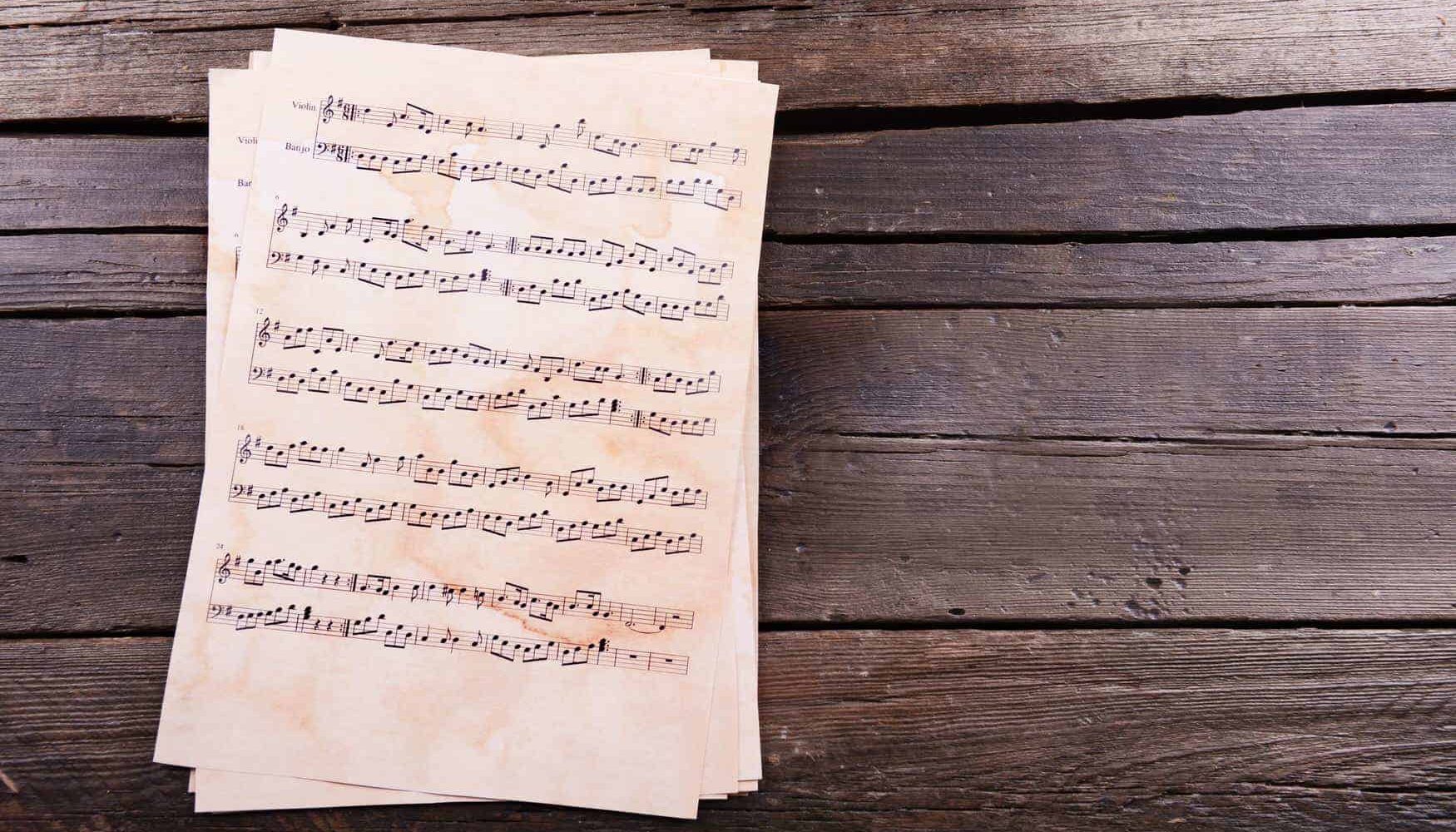
Cracking the code of sheet music has been my musical treasure hunt. At the start, you’ll encounter the clef, setting the pitch stage for the notes. Then follows the key signature, a signpost that tells us which notes to sharpen or flatten throughout the piece.
Decoding the method of reading sheet music hinges on understanding these symbols. For instance, spotting a 4/4 time signature tells me I’ll be counting four crotchets (quarter notes) per bar, giving each one a tap of my foot.
Reading compound time, like 6/8, alerts me that each measure dances to the rhythm of two dotted crotchets (dotted quarter notes). Adopting these reading habits has been essential in translating those dots and lines into charming melodies and rhythms.
Top Piano Brand Guide
DP-12 Compact Digital Piano by Gear4music
The DP-12 Compact Digital Piano by Gear4music is recommended for beginners due to its user-friendly interface and 88 semi-weighted keys that offer a realistic playing experience.
Additionally, its built-in speakers and variety of instrument voices provide versatile practice options in a compact, space-saving design.
DP-12 Compact Digital
Piano by Gear4music
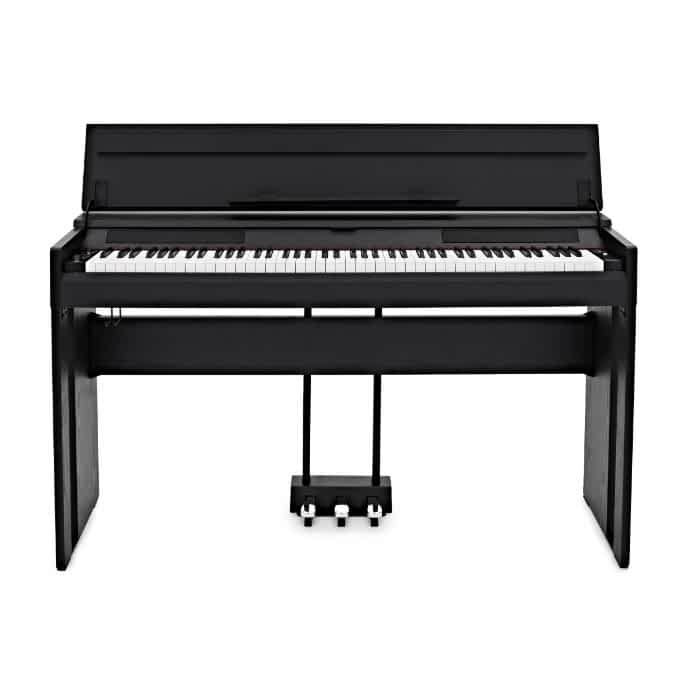
PERFECT FOR: Learning at home
FEATURES: 88-key digital piano ideal for living spaces
OTHER INFO: Synthetic ebony and ivory keys provide that premium grand feel
DP-12 Compact Digital
Piano by Gear4music
- Play with expression with a three-pedal unit and 128-note polyphony
- Get creative with 32 voices and a two-track playback recording
- With a sleek and stylish appearance
- No Bluetooth available
When you click ‘Check Price’, you’ll see there are loads of great places to buy this item. Our personal favorite is Sweetwater for the US, and Thomann and Gear4Music for the UK & Europe.
They are the largest music retailers, with excellent customer service, competitive prices, really fast shipping, and the longest guarantees.
The professional musician who wrote this article combined many things,
from the product build, manufacturer’s reputation through to feedback
from other users, to create our famous TedScore™.
Kawai CN21 Digital Piano
The Kawai CN21 Digital Piano features an Advanced Hammer Action IV-F keyboard and Harmonic Imaging sound technology, delivering an authentic and expressive piano playing experience.
Its built-in lesson functions and high-quality speaker system make it an excellent choice for both beginners and experienced players.
Kawai CN21 Digital Piano
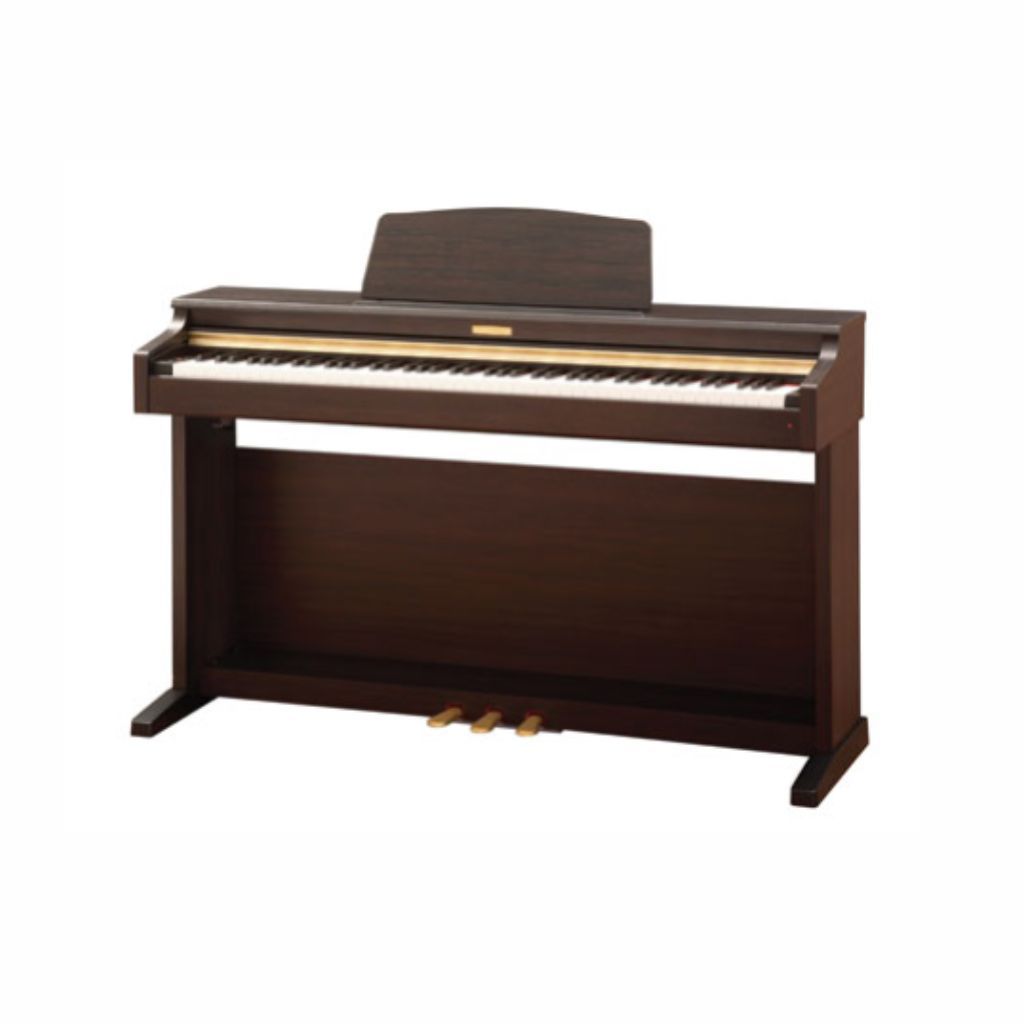
FEATURES: OLED Display That Makes Navigation Easy
OTHER INFO: Spatial Headphone Sound Technology Enhances The Depth And Realism Of The Sound
- Includes Kawai's lesson function to learn classic piano pieces
- Adjust the instrument's parameters with the Virtual Technician app
- Creates rich and expressive sounds like the SK-EX and EX concert grand pianos
- With Superior Headphone Sound technology to enhance playing experience
- Advanced mode requires an iPad to access
When you click ‘Check Price’, you’ll see there are loads of great places to buy this item. Our personal favorite is Sweetwater for the US, and Thomann and Gear4Music for the UK & Europe.
They are the largest music retailers, with excellent customer service, competitive prices, really fast shipping, and the longest guarantees.
The professional musician who wrote this article combined many things,
from the product build, manufacturer’s reputation through to feedback
from other users, to create our famous TedScore™.
Yamaha C3X PE Grand Piano
The Kawai Yamaha C3X PE Grand Piano offers exceptional craftsmanship with its solid spruce soundboard and advanced V-Pro frame, resulting in a rich, dynamic tone.
Its responsive action and elegant design make it a top choice for professional musicians and discerning pianists.
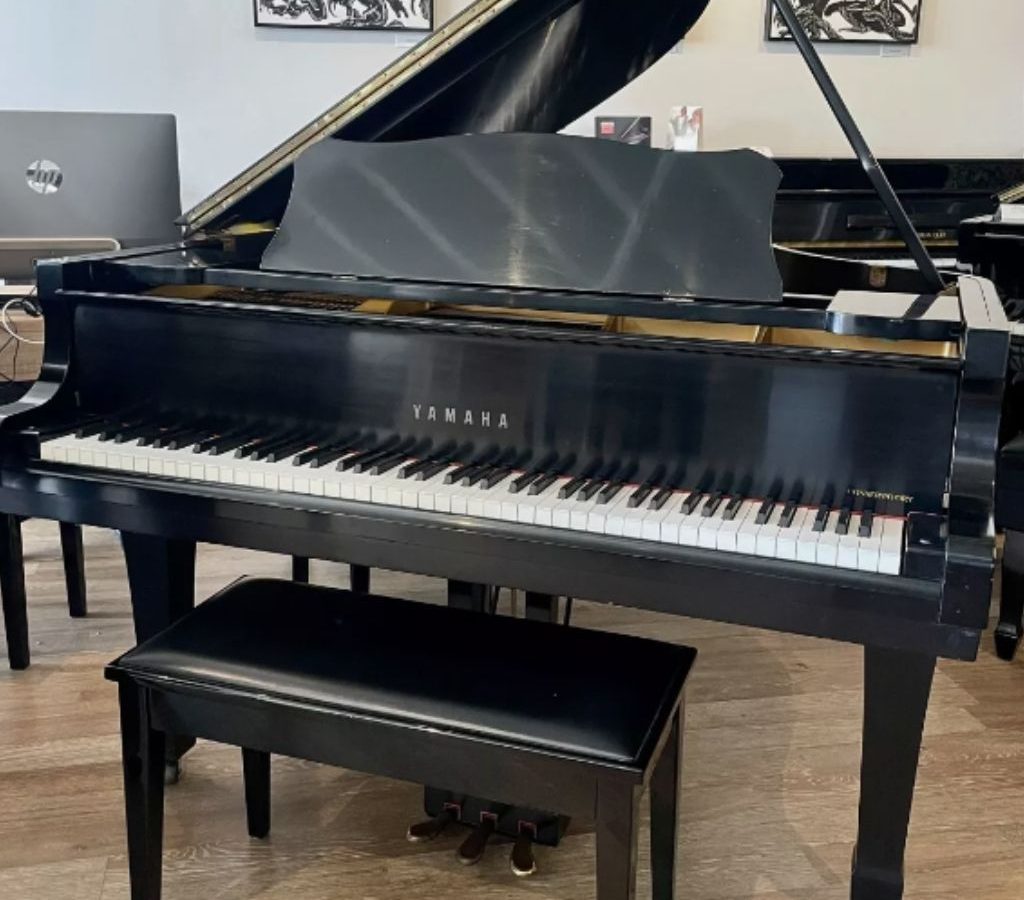
Yamaha C3X PE Grand Piano
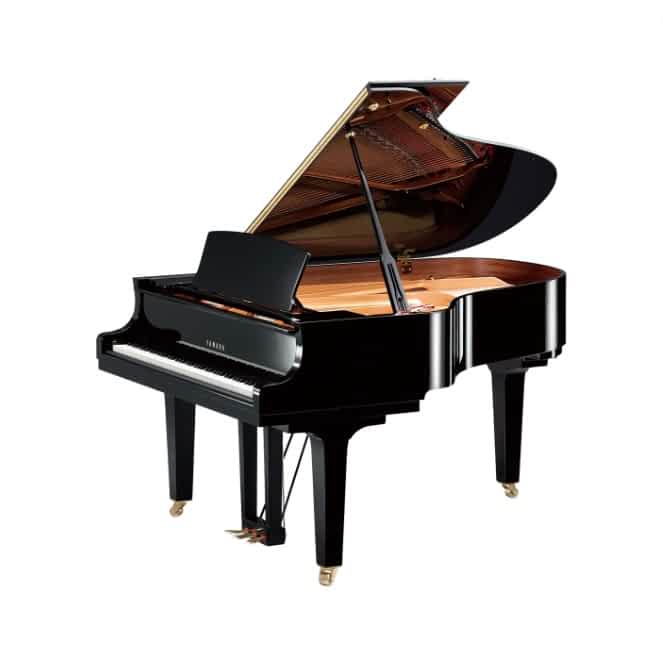
PERFECT FOR: use at home or in small performance spaces
FEATURES: Utilises 3 pedals for full sostenuto
OTHER INFO: Made from high-quality materials
Yamaha C3X PE Grand Piano
- With a length of 186 cm
- Produces beautiful, rich tones
- Available in a range of letters and models (G3, C3, C3X)
- An amazing sound that will make any pianist happy
- A piano that will last a lifetime
- Expensive piano - one of Yamaha's top-tier pianos
When you click ‘Check Price’, you’ll see there are loads of great places to buy this item. Our personal favorite is Sweetwater for the US, and Thomann and Gear4Music for the UK & Europe.
They are the largest music retailers, with excellent customer service, competitive prices, really fast shipping, and the longest guarantees.
The professional musician who wrote this article combined many things,
from the product build, manufacturer’s reputation through to feedback
from other users, to create our famous TedScore™.
6/8 time signature:
Fundamental learnings
I’ve been exploring the charm of the 6/8 time signature, and it’s all about the flow, like a happy jog in the park where you can’t help but bounce to the rhythm.
Each measure has six eighth notes, grouped into sets of three, creating that delightful swaying feeling often heard in folk and ballad tunes.
Let’s talk about accents—they are the show stars, appearing on beats one and four, giving us that solid rhythm.
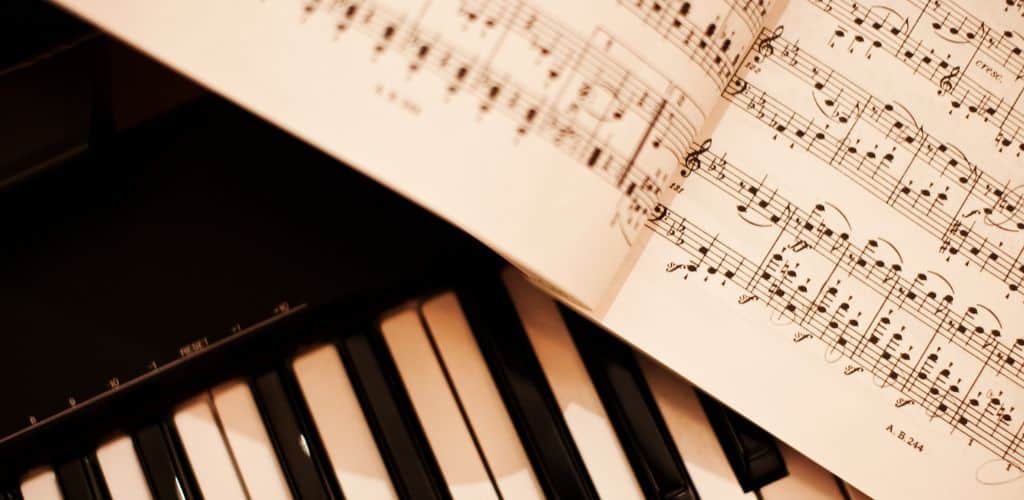
Interestingly, even though we have six beats, we often feel it as two, thanks to those clever accents.
If you want to add silence to your music, a dotted half note fits in as a full, quiet beat, giving the notes around it a chance to shine.
Give 6/8 a try the next time you play with a composition or strumming on your guitar. Its signature brings a touch of elegance, a hint of complexity, and a warm embrace to your music.
Remember, each measure is a little adventure – grasp, shape, and create something uniquely yours.
Stay tuned, there’s more…
Check out this article featuring the top 10 best digital pianos for beginners.
FAQ's
A 6/8 time signature in music indicates six beats in a measure, with each beat represented by an eighth note. This time signature often creates a flowing and lilting feel in the music.
The main difference between 3/4 and 6/8 time signatures is in the number of beats per measure and the way the beats are grouped. In 3/4 time, there are three beats per measure, typically represented by quarter notes, while in 6/8 time, there are six beats per measure, often represented by eighth notes grouped in sets of three.
The 6/8 time signature is commonly associated with dances such as the Irish jig and the Colombian bambuco. These dances often feature movements that align with the rhythmic pattern of the 6/8 time signature, creating a lively and flowing dance experience.
While the waltz is traditionally set in a 3/4 time signature, which consists of three beats per measure, it is possible for a piece to have a waltz-like feel while being notated in a 6/8 time signature. In such cases, the rhythmic emphasis and phrasing may convey a similar flowing and graceful sensation often associated with the waltz despite the different time signatures.










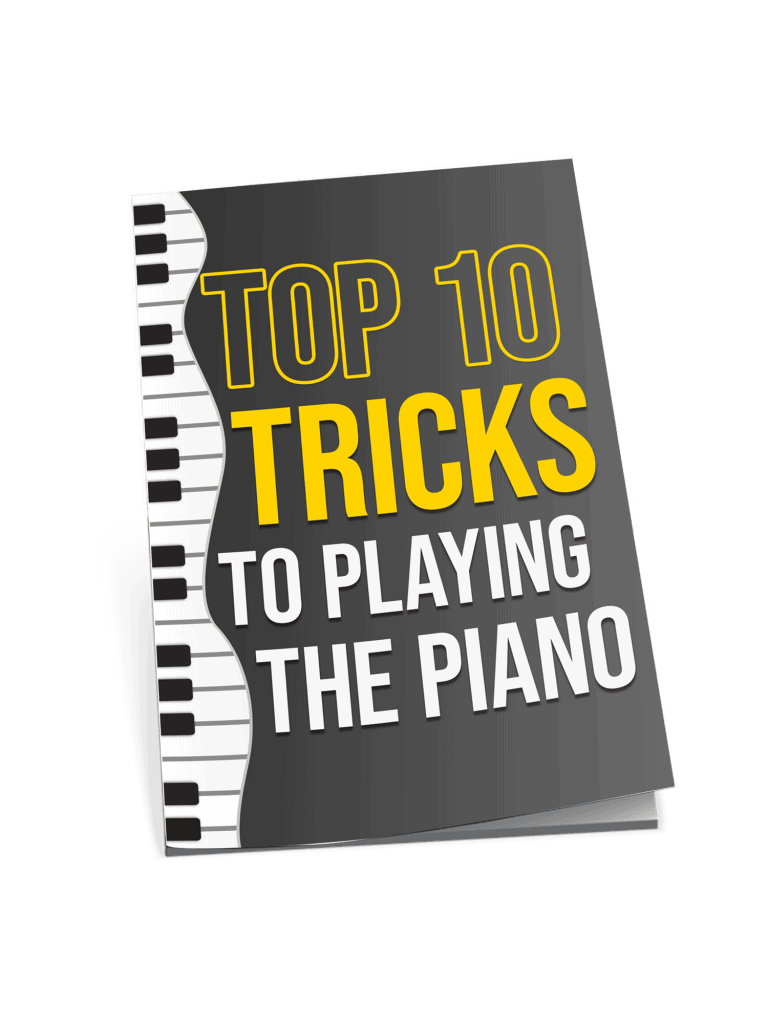
Not sure I’m buying the whole ‘6/8 is the best for emotional depth’ argument some people make. Yeah, it’s great for that ‘rolling’ feeling and sure, it’s in a lot of ballads and stuff, but I reckon you can get just as much emotion out of 4/4 with the right chord progressions and melody. It’s not just about the time signature, it’s how you use it. What do others think? Does the time signature really make that big a difference?
Love the piano brand guide! Been thinking of getting a new one to replace my old clunker. The Kawai CN21 sounds perfect for my tiny apartment. Thanks for the recs!
Super excited to try it out, thanks!
Kawai CN21 is solid. You’ll enjoy the touch response if you’re into dynamic playing. Happy playing!
Yo, that bit about common usage in genres got me thinking. I’ve been playing around with some 6/8 beats but never really thought about how it’s been used across different types of music. Gonna dive deeper into this, might unlock some new vibes for my tracks. Cheers for the insights.
I found the section on note values and grouping within the 6/8 time signature particularly enlightening. It’s always a challenge to get students to internalize the difference between compound and simple time.
Elinor , could you possibly expand on how these groupings can affect the phrasing of music, especially in more complex pieces? I believe understanding this could greatly enhance interpretive skills.